
This page explains details of centrifuges such as the mechanisms of centrifuges and how they operate, and the types of centrifuges and where they are used.
Contents
- 1 What is a centrifuge?
- 1-1 Separation
- 1-1-1 Centrifugal Sedimentation
- 1-1-2 Centrifugal Filtration
- 1-1-3 Centrifugal Separation
- 1-2 Centrifuges
- 2 Centrifuge Mechanisms
- 2-1 Centrifugal Sedimentation Machine
- 2-2 Centrifugal Filtration Machine
- 3 Centrifuge Operation and Filtration Process
- 3-1 Feed
- 3-2 Dehydration
- 3-3 Crystal Washing
- 3-4 Discharge
- 3-5 Cleaning the Centrifuge Interior
- 3-6 Immersion Cleaning
- 4 Types of Centrifuges
- 4-1 Batch Centrifuges and Continuous Centrifuges
- 4-1-1 Batch Centrifuges
- 4-1-2 Continuous Centrifuges
- 4-2 Vertical, Horizontal and Diagonal Centrifuges
- 4-2-1 Vertical Centrifuges
- 4-2-2 Horizontal Centrifuges
- 4-2-3 Diagonal Centrifuges
- 5 Discharge Methods
- 5-1 Top Discharge Centrifuge
- 5-2 Bottom Discharge Centrifuge
- 5-3 Suction Centrifuge
- 5-4 Horizontal Centrifuge
- 5-5 Ball Centrifuge
- 5-6 Diagonal Centrifuge
- 6 Uses of Centrifuges
- 7 Centrifugal Effect Calculation
What is a centrifuge?
A centrifuge is a device that generates a centrifugal force to separate solids and liquids , or to separate immiscible liquids with different specific gravities like water and oil.
・Separates solids and liquids
・Separates immiscible liquids with different specific gravities like water and oil
Separation
A centrifuge is a machine that generates a centrifugal force to separate solids and liquids. First, we will explain what is meant by separation.
As an example, when sweet saké or cloudy saké are left for a while without drinking, the saké will separate into clear water and sedimented solid matter.

Here, gravity has separated the water and sediment as they have different specific gravities.
Similarly, after putting cloudy water into a bucket and leaving it for a while, gravity separates the sand and other solid matter from the clear water.
This effect is called gravity sedimentation.

Centrifugal Sedimentation
If you turn a bucket of water upside down, the water will normally spill out. But when you hold the bucket by its handle and swing it round forcefully, the water in the bucket does not spill out.
This is because by forcing the bucket to rotate, a force many times greater than gravity called the centrifugal force is exerted on the water. Consequently, the water, which would normally spill out under the force of gravity, instead remains at the bottom of the bucket as this centrifugal force is stronger than gravity.
Centrifugal Force > Gravity
When you hold the handle of a bucket containing cloudy water and swing it round forcefully, the centrifugal force acts, exerting a greater force than that exerted by gravity in natural separation. As a result, clear water and sand or other solids are separated in a shorter time than in gravity sedimentation.
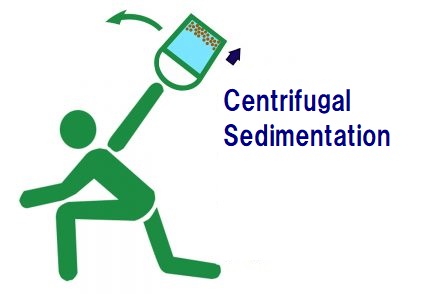
This method of using the centrifugal force to cause sedimentation is called centrifugal sedimentation.
The strength of the centrifugal force varies with the rotation speed and the distance from the center of rotation to the bucket (rotation radius), but a centrifuge can generate from hundreds of times to 10,000 times more force than gravity, making separation hundreds of times to 10,000 times faster than in gravity sedimentation.
In a case of a customer of ours, the customer was using gravity sedimentation for separation, and this took 2 days, but by using the centrifugal force, the customer was able to perform the separation by centrifugal sedimentation in 30 minutes.
When employing centrifugal sedimentation in practice using a centrifuge
・Centrifugal sedimentation separates out particles finer than the filter medium used for filtration, so that only clear water is discharged through the pipe to the outside.
・Liquid and liquid are separated so that the two liquids are discharged through separate pipes.
Usage is as described above.
Centrifugal Filtration
When you hold the handle of a bucket containing cloudy water and swing it round forcefully, the centrifugal force acts, exerting a greater force than that exerted by gravity in natural separation. As a result, clear water and sand and other solids are separated in a shorter time than in gravity sedimentation.
The method of perforating the bottom of the swinging bucket with small holes, so that only water is ejected leaving only sand inside the bucket, is called centrifugal filtration.
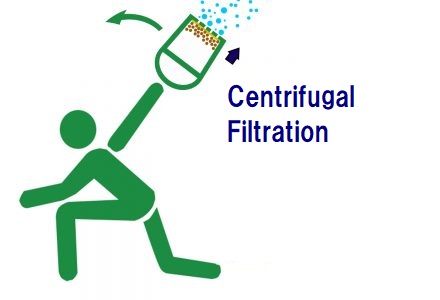
The size of the perforations in the bucket is altered according to the size of solid you want to remain in the bucket.
Centrifugal Separation
The centrifugal sedimentation and centrifugal filtration described above are generically referred to as centrifugation.
Centrifugation is the method of separating the components of a substance by subjecting it to a centrifugal force.
・Gravity sedimentation: a method that uses gravity to separate water and sediment that have different specific gravities.
・Centrifugal sedimentation: a method that uses the centrifugal force to separate water and sediment that have different specific gravities.
・Centrifugal filtration: a method of separating water and sediment by using the centrifugal force to discharge the water outside.
・Centrifugation: A generic term referring to both centrifugal filtration and centrifugal sedimentation.
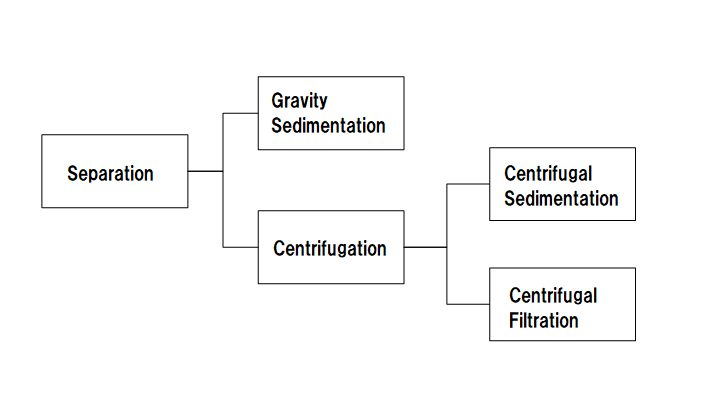
Centrifuges
A centrifuge is a device that generates a centrifugal force internally and uses centrifugal sedimentation and centrifugal filtration effects to separate solids and liquids , or to separate liquid and liquid that are immiscible and have different specific gravities like water and oil.
・Separate solids and liquids
・Separate liquid and liquid that are immiscible and have different specific gravities like water and oil
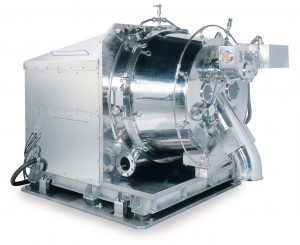
Centrifuge
Centrifuge Mechanisms
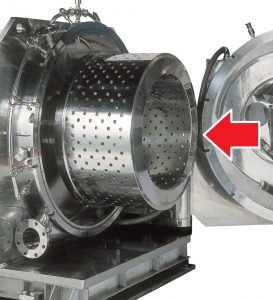
The centrifuge is equipped with a rotating unit (basket) internally and this basket is rotated at high speed to generate a centrifugal force.
The basket is a cylindrical part with a perforated side.
The basket in a centrifugal filtration machine has a perforated side, but the basket in a centrifugal sedimentation machine is not perforated.
Centrifugal Sedimentation Machine
In a centrifugal sedimentation machine, which performs separation through the difference in specific gravity of liquid and liquid or fine solid matter, the rotating unit has no filter or holes through which liquid passes. Instead, the heavy liquid forms on the walls of the rotating unit, the light liquid forms above that, and the liquids are discharged separately, and the separated liquids recovered.
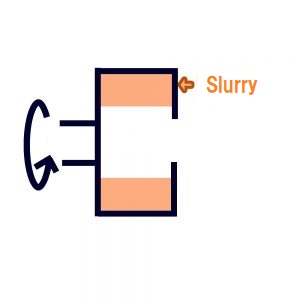
① Slurry, the thick liquid prior to filtration, is fed into the rotating basket.
② A centrifugal force is applied and the slurry clings to the inside wall of the basket.
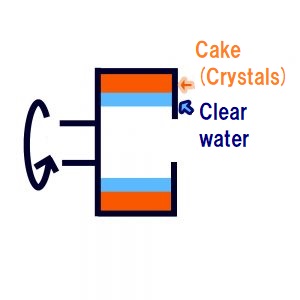
③ When the rotation of the basket is speeded up, due to the difference in specific gravity, the substance with the greater specific gravity will migrate to the wall of the basket due to the centrifugal force.
④ At the point when the substance with the greater specific gravity and the substance with the smaller specific gravity are separated, they are discharged to the outside through respective pipes and the clear water and crystals are recovered.
Crystals that migrate to and accumulate on the wall are referred to as “cake.”
The separation of solid and liquid is called “solid-liquid separation,” and the separation of liquid and liquid is called “liquid-liquid separation.”
Centrifugal Filtration Machine
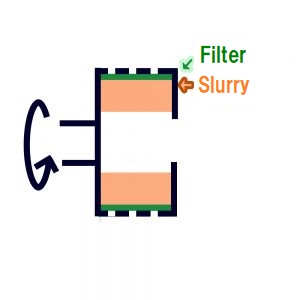
① In a centrifugal filtration machine, a filter (cloth or metal filter) is attached to the rotating unit and the liquid is separated from the solid in the treated substance by passing through the filter.
The filter is attached to the inside of the basket that has a perforated wall, and the basket is rotated.
② The slurry, which is the thick liquid prior to filtration, is fed into the inside of the basket.
③ The slurry is then subject to the centrifugal force and therefore clings to the inner wall of the basket.
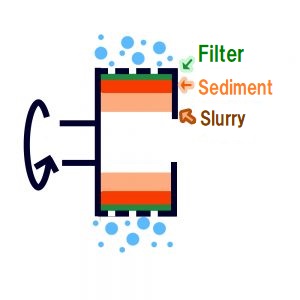
④ When the speed of rotation of the basket is increased, the crystals in the slurry migrate outward under the centrifugal force, and sediment accumulates on the wall of the basket.
⑤ The sediment is retained in the basket by the filter medium, and water molecules smaller than the holes of the filter medium are discharged through the perforations in the basket.
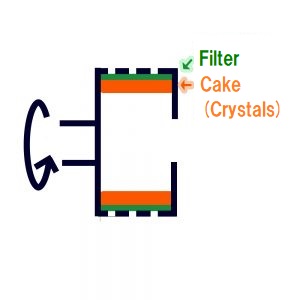
⑥ The finally remaining powder that is completely drained of moisture is referred to as “cake” or “crystals.”
In this way, centrifugal filtration is carried out in a centrifuge.
Centrifuge Operation and Filtration Process
Here is a video of how a centrifuge works.
You can check the process of the operation carried out in a centrifuge in this video.
Feed
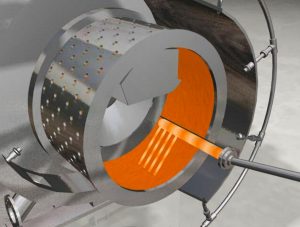
① A filter cloth is attached inside the basket. The casing is closed, and the device started up.
② The device is accelerated up to the rotation speed required for the feed process, and then slurry is fed in through the feed pipe.
③ The feed quantity is regulated by an overfeed prevention device.
Dehydration
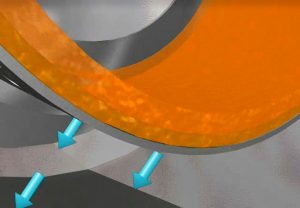
① The rotation speed increases to the preset value.
② The separated liquid filtrate is discharged from the basket.
③ Solid matter is deposited inside the basket due to the removal of the liquid.
④ The liquid removal process is carried out for a preset time.
Crystal Washing
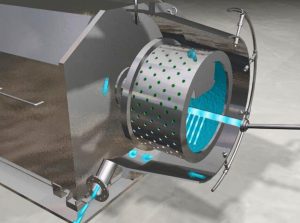
① In some cases, there is a process to wash solids and crystals inside the basket with water or solvent, etc. In that case, the cleaning solution is fed through the washing pipe into the basket.
② After the cleaning solution has been fed in, the inside of the cake is thoroughly washed and discharged from the basket.
Discharge
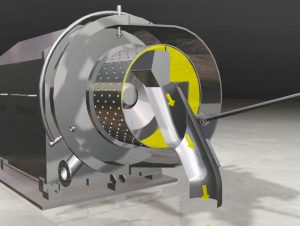
① The rotation speed is decreased to a speed at which the discharge process is possible, and the scraper device is started up. The scraper blade cuts into the crystals and scrapes the crystals off.
② The crystals scraped off fall down and are transported to the next process.
Cleaning the Centrifuge Interior
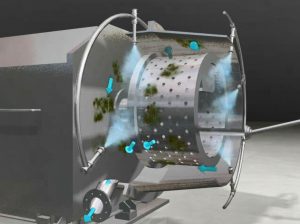
① At a low rotation speed, a part called a CIP cleaning nozzle ejects the cleaning solution while rotating. This part can clean every corner of the inside of the machine.
Immersion Cleaning
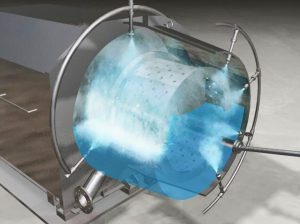
① The low rotation speed is maintained, and the cleaning solution is sprayed from the nozzle with the filtrate outlet closed.
② The washing effect can be further enhanced by soaking the inside of the machine with a cleaning solution.
Types of Centrifuges
Batch Centrifuges and Continuous Centrifuges
Batch Centrifuges
This system completes the entire process each time as one cycle, from feeding in the feed to separating, removing liquid, discharging, and washing.
The first batch and the second batch are counted.
Using a washing machine as an example, you add the detergent after putting in the clothes, rinse after washing, and then take out the clothes after the draining process. The second washing starts with the process of putting in clothes again.
In a centrifuge, the feed is fed roughly into the centrifuge, and after the process of removing the liquid, discharging and cleaning is completed, the feed is fed in again as a second batch.
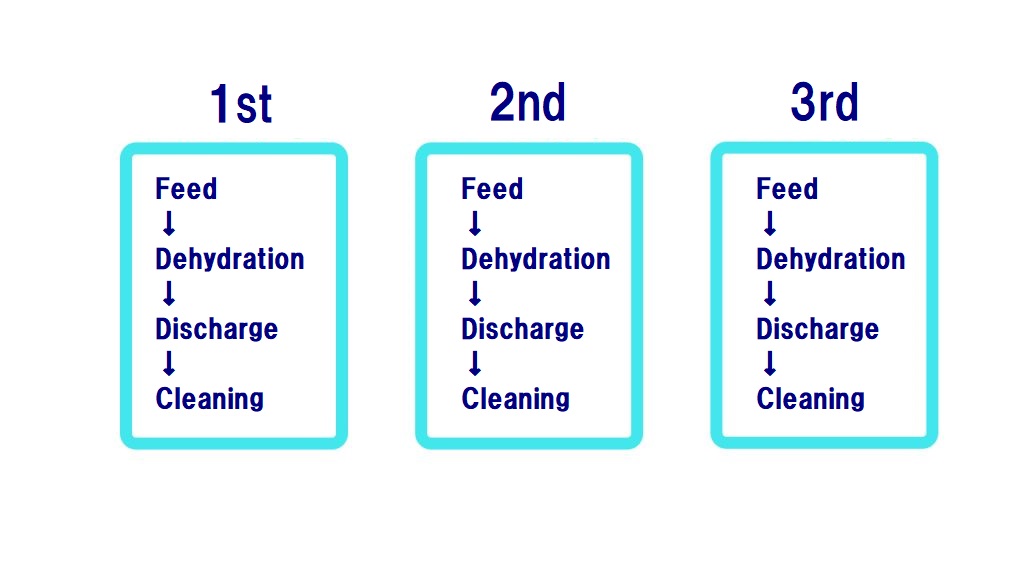
Advantages
・Filtration of a variety of liquids is possible
As the time can be set respectively for feeding in, removing liquid, discharging, and cleaning, it is possible to filter various liquids according to the nature of each liquid.
・Tracing is possible
The ability to manage each batch enables tracing of when a product was created if the product needs to be recovered.
・Space-saving
It is space-saving because the process proceeds by dividing time in one machine.
・Can be checked each time
It is possible to progress the process while checking the degree of filtration, and so on, each time.
Disadvantages
・The processing takes time
Compared with the continuous centrifuge, it takes time to complete 1 cycle from feed to cleaning.
・Unsuitable for use in mass production or mass processing
Compared with the continuous centrifuge, it is not suitable for the filtration of a large volume of liquid because the processing is not continuous.
Our batch centrifuge can handle up to 940kg of throughput at a time.
Matsumoto Machine batch centrifuges
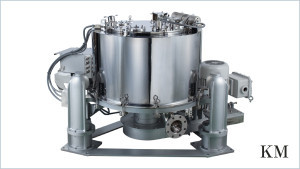 |
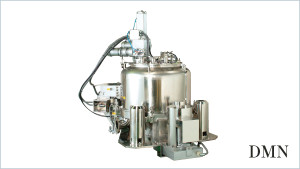 |
 |
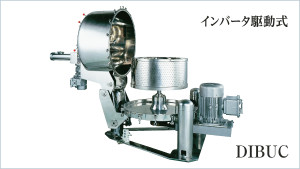 |
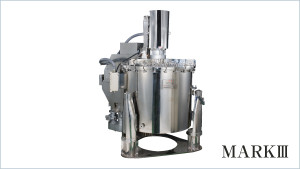 |
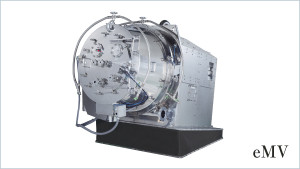 |
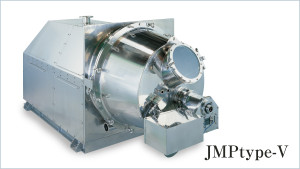 |
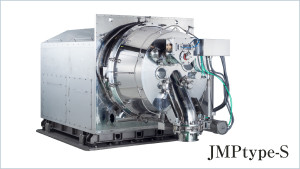 |
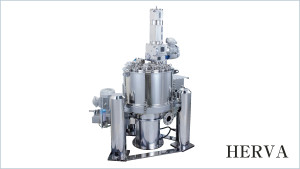 |
 |
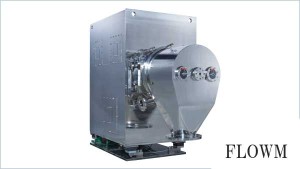 |
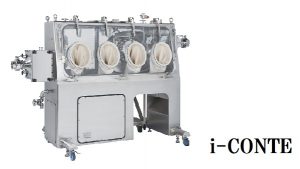 |
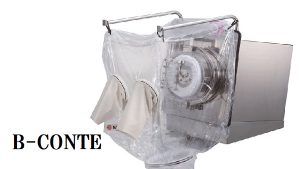 |
Continuous Centrifuges
This system continuously handles a sequential flow of discharging while feeding in.
Using a washing machine as an example, if you keep putting clothes in little by little from the top of the washing machine, clothes that have been wrung dry after washing will emerge from the bottom of the washing machine.
In a centrifuge, when liquid is fed into the machine little by little, while liquid is removed inside the machine, discharge will be carried out simultaneously in a sequential flow.
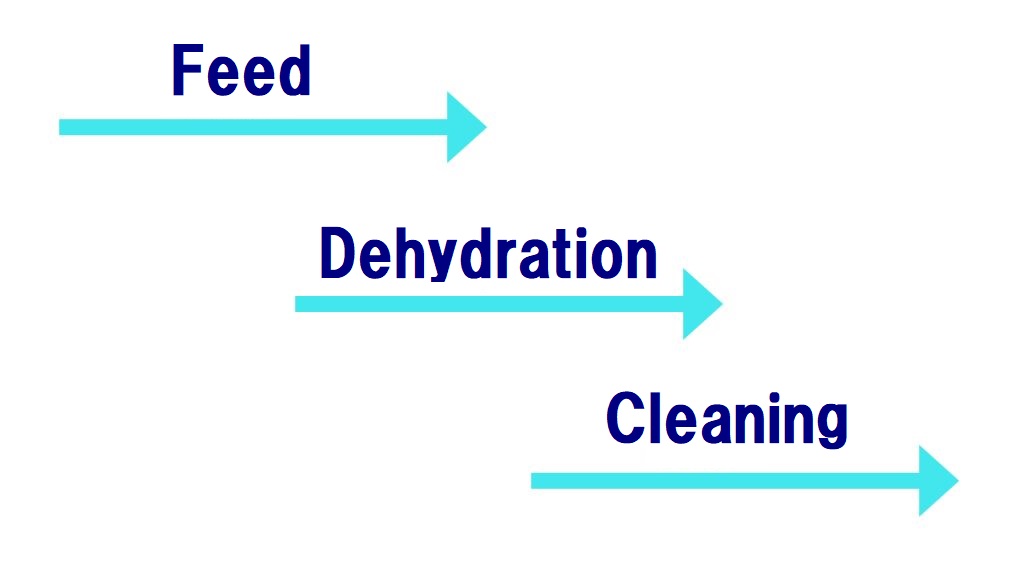
Advantages
・Supports mass production and processing
It can filter large volumes of liquid.
The throughput is stated as XX liters per hour based on calculating how many liters can be filtered per hour.
・The processing time is shortened
Since liquid is discharged at the same time as being fed in little by little, the time from input to output is shorter compared to the batch centrifuge.
Disadvantages
・The machine is large
Because all processes are performed simultaneously in one machine, the machine is relatively large.
・Difficult to respond flexibly
Because the machine cannot be stopped during filtration or cleaning, it is difficult to respond to changes during processing.
・Tracing is difficult
When a product defect occurs, it is difficult to trace at what stage and where the defect occurred.
Matsumoto Machine continuous centrifuges
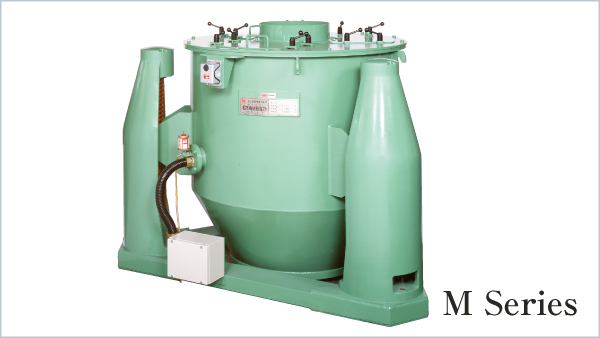 |
Vertical, Horizontal and Diagonal Centrifuges
The centrifuges are classified as vertical, horizontal, and diagonal according to the direction of the basket.
Vertical Centrifuges
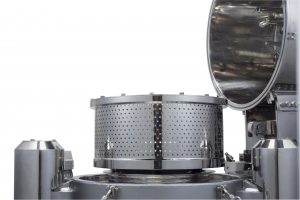
A centrifuge with the basket facing upward is a vertical centrifuge.
Advantages of a vertical centrifuge
・Space-saving
When based on processing capacity, the installation space required for the main unit of the centrifuge is reduced.
・Can handle large volumes
The processing capacity is larger than that of the horizontal centrifuge.
Disadvantages of a vertical centrifuge
・Difficult to contain substances
Compared to the horizontal centrifuge, it is more difficult to contain strong drugs with high pharmacological activity and toxicity.
・Contamination risk
When installed in a clean room, as the entire drive unit including the motor are installed, the risk of contamination is increased compared to a horizontal centrifuge.
Matsumoto Machine vertical centrifuges
 |
 |
 |
 |
 |
 |
 |
 |
Horizontal Centrifuges

A centrifuge with the basket facing sideways is a horizontal centrifuge.
Advantages of a horizontal centrifuge
・Ideal for preventing contamination
It is easy to place the drive unit such as the motor outside the clean room and install only the front of the basket inside the clean room.
・Space-saving in the clean room
It saves on installation space in the clean room.
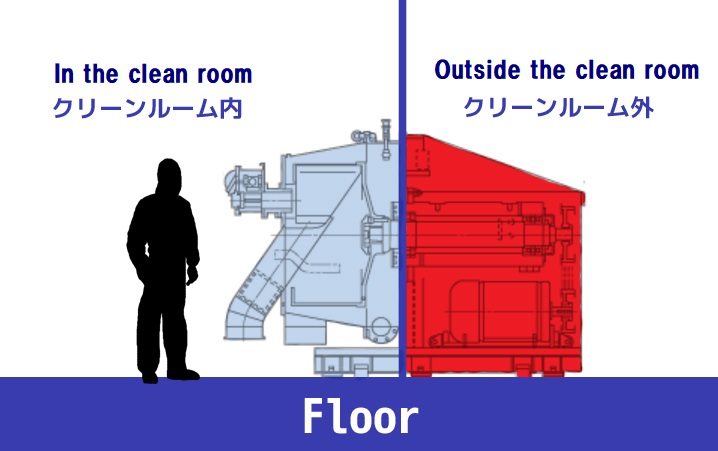
・Easy containment
Substances with high pharmacological activity or strong toxicity are easily contained.
・Advantageous for FDA inspections, etc.
Since the horizontal centrifuge is the standard overseas, it is advantageous in the case of an FDA inspection.
Disadvantages of a horizontal centrifuge
・The overall size of the machine is large
The installation space required for the main unit based on processing capacity is greater than that required for a vertical centrifuge.
・Not suitable for use in mass production
The maximum throughput is less than that of a vertical centrifuge.
Matsumoto Machine horizontal centrifuges
 |
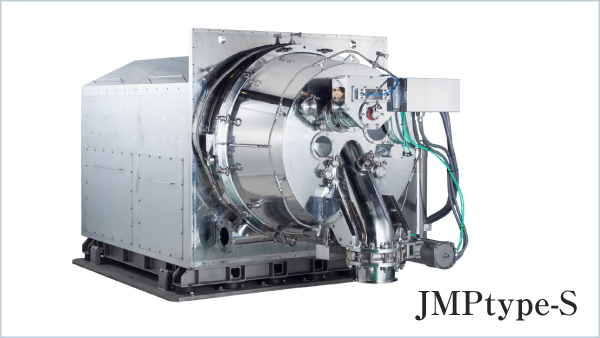 |
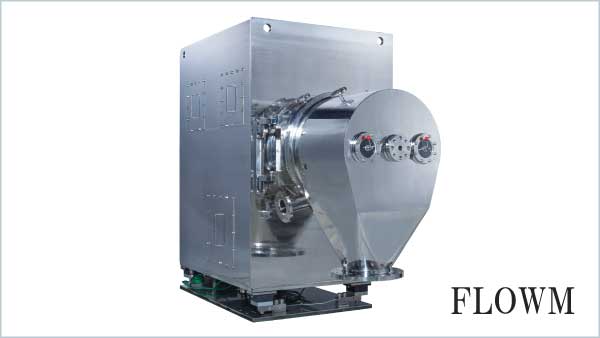 |
Diagonal Centrifuges
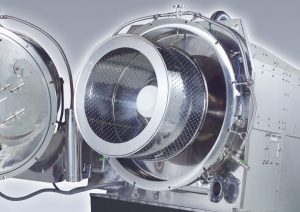
A centrifuge with the basket attached diagonally is a diagonal centrifuge.
Advantages of a diagonal centrifuge
・Reduction of operator’s physical burden
Since the basket is slanted, it is easy to remove the filter cloth and crystals from inside the basket without bending the waist too much, reducing the burden on the operator.
・Reduced risk of contamination
It is easy to place the drive unit such as the motor outside the clean room and install only the front of the basket inside the clean room.
・Space-saving in the clean room
It saves on installation space in the clean room.
Disadvantages of a diagonal centrifuge
・Overall the machine is large
The installation space required for the main unit based on processing capacity is greater than that required for a vertical centrifuge.
・Not suitable for use in mass production
The maximum throughput is less than that of a vertical centrifuge.
Matsumoto Machine diagonal centrifuges
 |
 |
 |
Discharge Methods
Here we classify centrifuges according to the method of discharge of crystals, cake or solid.
Top Discharge Centrifuge

Solids are removed from the top of the machine.
Advantages
・Allows recovery of the entire amount of the crystals
Since the filter cloth is bag-shaped, the entire amount of the crystals can be recovered.
・Ideal for small-lot high-mix production
Because it can be produced in small quantities, it is ideal for small-lot high-mix production.
・Can be installed on the first floor
Since substances are removed from the top of the centrifuge, it can be installed on the first floor of a factory.
Disadvantages
・Not suitable for automation
Basically, the bag-shaped filter cloth is pulled out and discharge carried out by hand. Therefore, it is not suitable for automation.
・High risk of contamination
Because there is human intervention in the discharge process, there is a risk of contamination compared to other methods of discharge.
Matsumoto Machine top discharge centrifuges
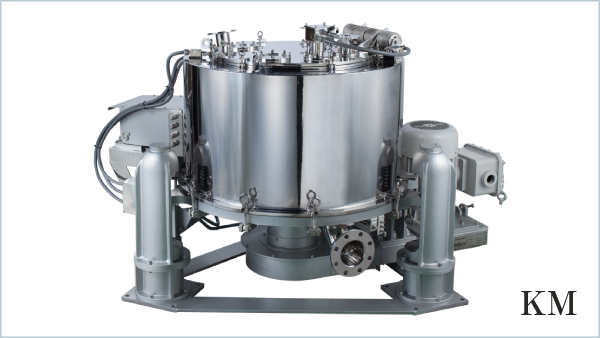 |
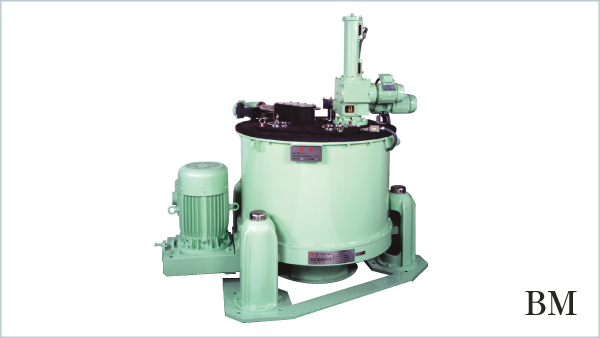 |
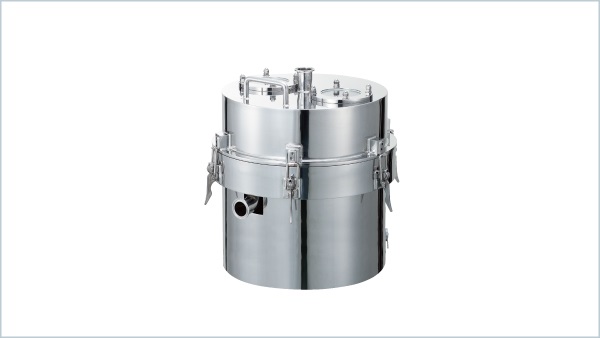 |
Bottom Discharge Centrifuge

Crystals are automatically discharged from the bottom of the machine.
Advantages
・Automation is possible
The scraper device is a part that scrapes crystals off and drops them under the machine, so the discharge operation can be carried out automatically, therefore automation is possible.
・Low risk of contamination
Because there is no human intervention during discharge, the risk of contamination is reduced.
Disadvantages
・Difficult to install on the first floor
It is difficult to install on the first floor because substances are discharged under the machine.
・Not suitable for total recovery of substances
Since the crystals are scraped by a part called the scraper device, it is possible to recover crystals from close to the filter cloth in the basket, but it is impossible to recover all the crystals.
Matsumoto Machine bottom discharge centrifuges
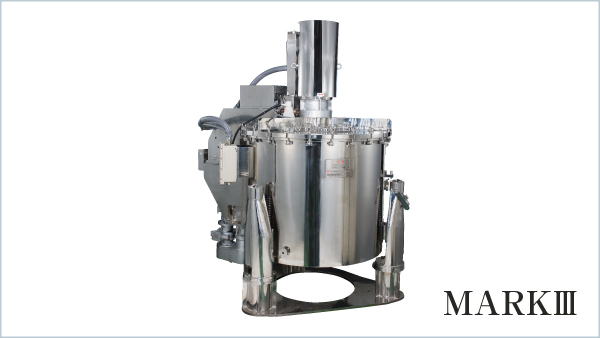 |
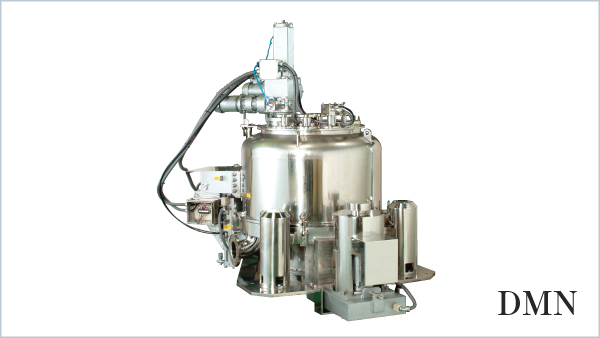 |
 |
Suction Centrifuge

Discharge is carried out by transporting in air from a nozzle installed inside the machine.
Advantages
・Low risk of contamination
Since the crystals are transported from the centrifuge to the next process by air, the risk of contamination is reduced.
・Allows installation on the first floor
Since the crystals are sucked out and transported by air, the centrifuge can be installed on the first floor of a factory.
Disadvantages
・Not suitable for high-mix production
Depending on the nature of the crystal, the pipe may become clogged, making this type of centrifuge unsuitable for high-mix production or multiple purposes.
Matsumoto Machine suction centrifuges
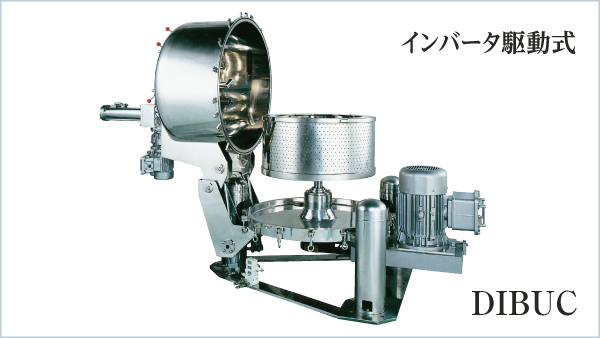 |
 |
Ball Centrifuge
By continuously feeding cutting chips into the ball-shaped basket, deoiled chips are continuously discharged.
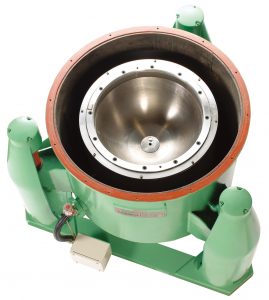
Advantages
・Allows mass production and mass processing
Since cutting chips are discharged while being fed in, large volume filtration is possible.
・Processing time is shortened
Since discharge takes place at the same time as feeding in little by little, the time from when the cutting chips are fed in to when they are discharged is shorter than for other discharge methods.
Disadvantages
・Small-lot production is difficult
Because the cutting chips are pushed out by inserted cutting chips and discharged, if the amount of chips to be processed is too small, they cannot be processed without being discharged.
Matsumoto Machine ball centrifuges
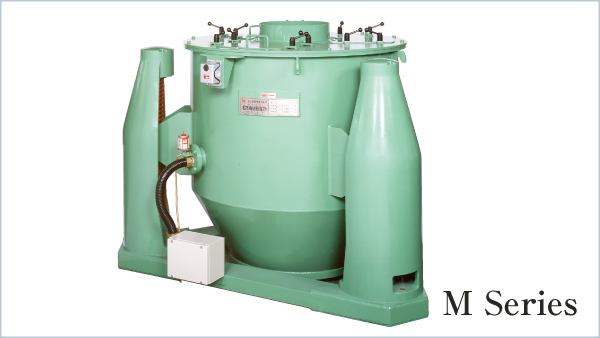 |
Uses of Centrifuges
Centrifuge uses include in pharmaceuticals, chemicals, agricultural chemicals, electronics materials, food manufacturing, purification and recycling of industrial waste, sludge treatment, and oil recovery from cutting chips. Centrifuges are used in a variety of places such as hospitals, universities, and corporate laboratories.

- Centrifuge Devices for use in Pharmaceutical Manufacturing
-

- Centrifuge Devices for use in Manufacturing Chemicals
-

- Centrifuges, Dehydrators, and Deoilers for use in Food Production
-
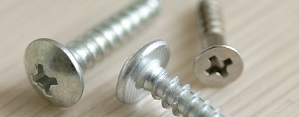
- Centrifugal Filtration Machines for use in Steel and other Industries
-

- Centrifugal Separators and Dehydrators for use in the Textile Industry
-

- Centrifuge Devices for use in Recycling
-
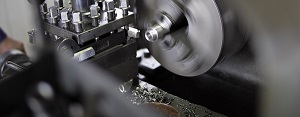
- Centrifuges for use in Recycling of Cuttings
-

- Centrifuge Devices for use in Research and Development
Download the basic facts booklet
We are giving away free downloads of the booklet “Basic Facts about Centrifuges”, the secret to improving filtration efficiency and productivity.
It is easy to understand for those who have never touched a centrifuge, and it is explained so that anyone can understand it in 5 minutes.
The booklet is recommended for those who use equipment for filtration, separation, oil draining, water draining, draining, and crushing.
Centrifugal Effect Calculation
Centrifugal effect: to determine Z(g)
Enter values (in half-width numeric characters) for the rotation radius, r(m), and the RPM (revolutions per minute), N(min-1), and press the “Calculate” button.
m
RPM N
min-1
Centrifugal effect Z
g
RPM (revolutions per minute): to determine N(min-1)
Enter values (in half-width numeric characters) for the rotation radius, r(m), and the centrifugal effect, Z, and press the “Calculate” button.
m
Centrifugal effect Z
g
RPM N
min-1
Rotation radius: to determine r(m)
Enter values (in half-width numeric characters) for the centrifugal effect, Z, and RPM (revolutions per minute), N(min-1), and press the “Calculate” button.
m
RPM N
min-1
Rotation radius r
m
Basic Formula
(N2×r)÷900
Z: centrifugal effect (g) r: rotation radius (m) N: RPM (revolutions per minute) (min-1)
The centrifugal effect (g) is easily calculated using the conversion formula. The approximation of Pi used in the calculation is 3.14159.

